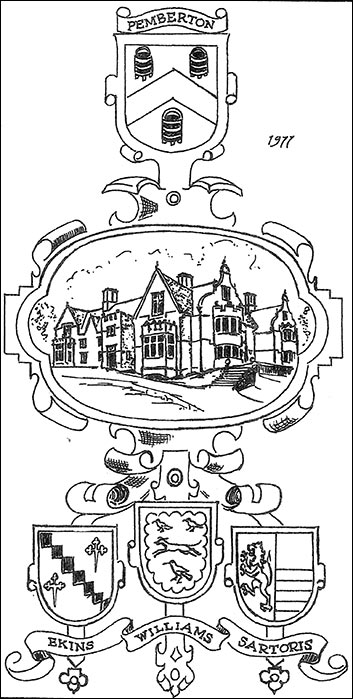 |
Though a private Manor, Rushden Hall, as early as the 13C appears to have been associated with officers of Higham Park or Castle and later with John of Gaunt, son of Edward III.
Robert Pemberton 1461, first of the family which occupied the Hall for 200 years, M.P. for Northampton 1477-8, High Sheriff in 1480, Usher of the Chamber to Richard III.
Robert Pemberton 1542-1609, Gentleman Usher to Elizabeth I, his brother Sir Goddard Pemberton M.P. for Lewes and High Sheriff of Hertfordshire, (their fine tombs to be seen in St. Mary's Church).
Sir Lewis Pemberton High Sheriff of Northamptonshire in 1616, died 1639, the last of the family to live at the Hall which became the home of John Ekins of Chester House, Irchester, a family with Parliamentarian sympathies, his grandson, another John, died in 1740.
The Fletcher family first recorded in 1755, Thomas Fletcher seems to have typified the Georgian 'Squire', hunting and shooting with a liking for horse racing, John Fletcher sold the Hall for 'the benefit of creditors' in 1836.
Thomas Williams, a man with a considerable fortune came from Berkshire and was in residence in 1822, High Sheriff in 1829, married twice he fathered some twenty one children and died at Windsor in 1881 aged 85 years. [He was a member of Higham Ferrers Association for the Apprehension and prosecution of Felons, &c., in 1837.]
The last family to occupy the Hall as a home appear in about 1840, when the newly married Frederick Urban and Mary Ann Sartoris took up residence, their grandson, Arthur Hugh Sartoris inherited the Estate, selling the property in 1929.
Rushden Urban District Council purchasing in 1931 from Mr Wheeler.
The Hall architecturally, is a complex mixture of styles both internally and externally — the early 16C arches within the Front Hall survive from the Great Hall of the Tudor house. The fine east front with its 'Dutch' gables and semi-circular bay windows, being post-Jacobean were probably built by Sir Lewis Pernberton, about 1630. Thomas Williams between 1820-30 carried out many alterations, adding the centre bay to the east front and re-modelling the south front, erecting the embattled porch (from elsewhere) and dividing the Great Hall into other rooms, incorporating the arms of Williams, Berthon and Cunningham into the ceiling of the Front Hall, the old Lodge and gates were of this period. F U Sartoris added the two gabled projections to the north-west incorporating a new kitchen and servants quarters, a second bay on the south front and the stable block.
|
|
Internally the two staircases possess original 17C balustrades though reconstructed, the linenfold panelling and 'Flemish' overmantle were brought from Bristol, the fire-back beneath depicts the arms of Edward VI and came from Higham Castle.
The wall surrounding the old kitchen garden is worthy of note being built without mortar, according to Cole 'the engagement entered into with the builder, was, that it should be erected without lime or soft mixture of any kind, and that, if even a bee could creep in between the interstices, the contract should be void'.
|